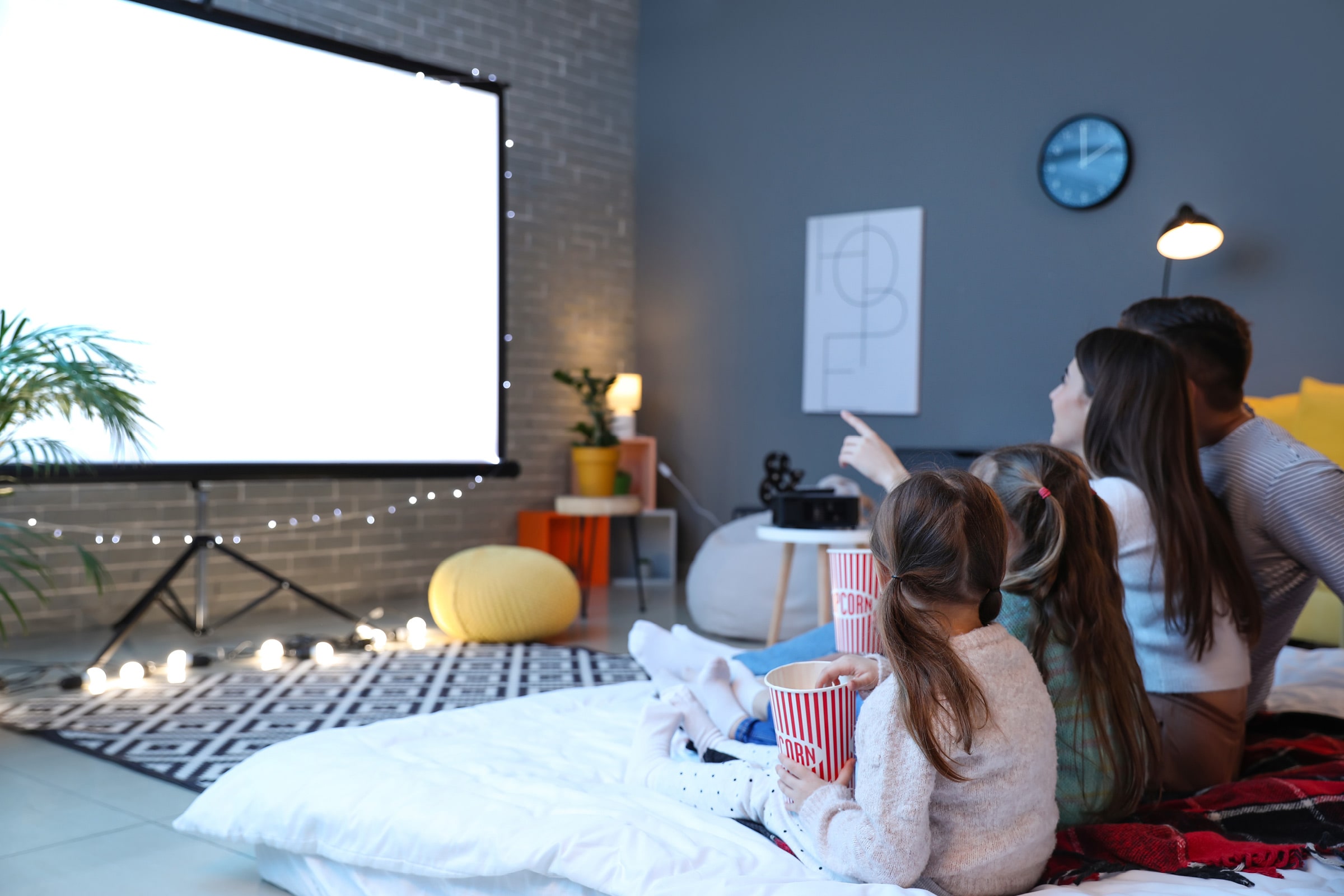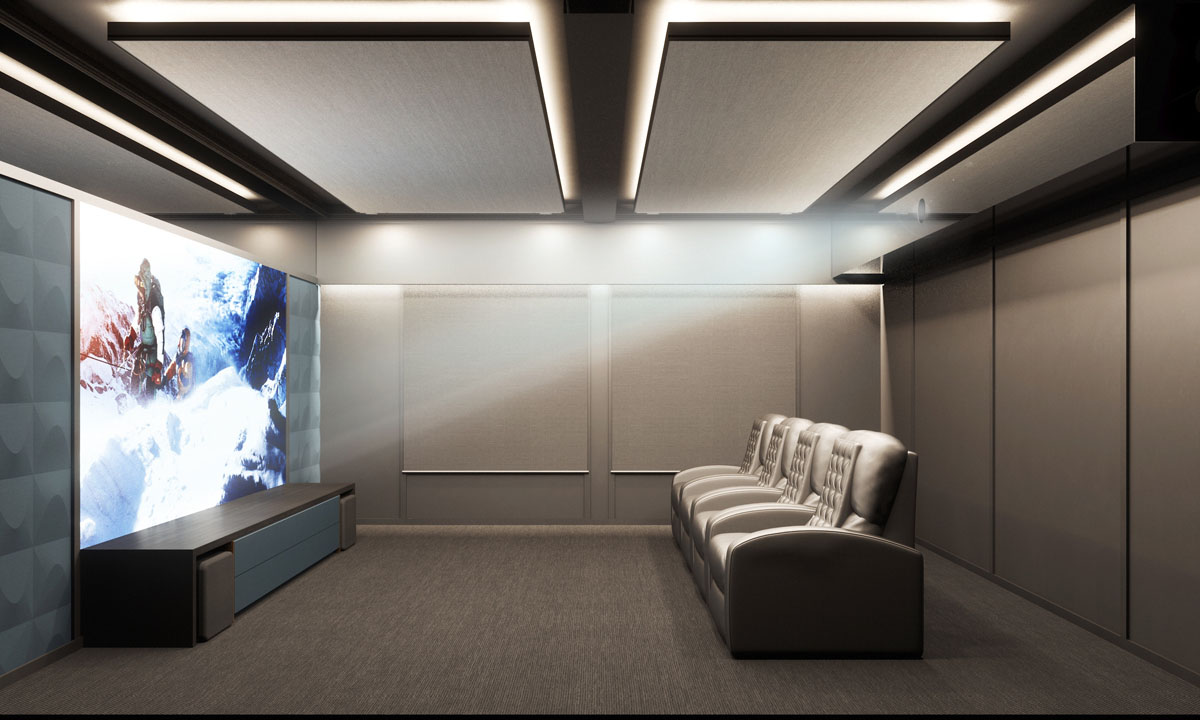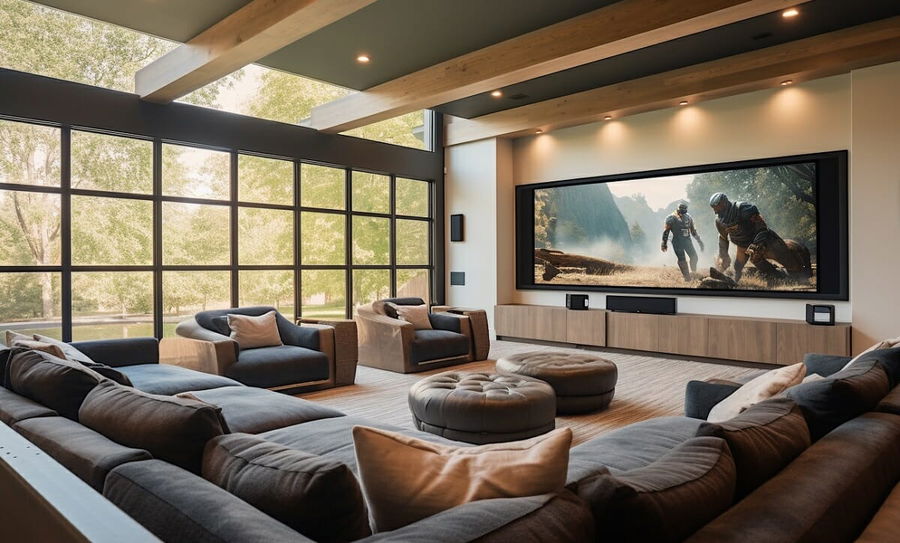Professional Tampa Home Theater Installation for a Smooth Experience
Home Theater 101: Everything You Required to Know for a Motion Picture Experience at Home
Producing a home theater that measures up to the cinematic experience of a business theater includes careful consideration of several components, consisting of display option, sound systems, and area layout. Whether you are pondering the optimal screen dimension or the complexities of border noise, comprehending these fundamentals is crucial.
Picking the Right Screen
When establishing a home movie theater, picking the right display can make or break the watching experience - home theater design tampa. The display works as the centerpiece of your configuration, affecting image high quality, seeing angles, and overall aesthetic. Trick variables to consider consist of display dimension, resolution, and kind
First, figure out the appropriate display dimension based on your space dimensions and seating range. A general standard is to sit about 1.5 to 2.5 times the diagonal screen size for ideal viewing. Next, choose between different display types, such as fixed-frame, motorized, or retracting screens, each offering distinctive advantages. Fixed-frame screens typically supply the most effective picture quality, while motorized choices enable for adaptability precede use.
Resolution is an additional vital factor. For a genuinely immersive experience, take into consideration a display created for 4K or perhaps 8K web content, guaranteeing intensity and clarity. Furthermore, take into consideration the display's gain, which impacts illumination and comparison; a greater gain can boost brightness in well-lit rooms, while a lower gain may be preferable for darker environments.
Selecting Sound Equipment
Audio devices is a crucial element of any type of home movie theater system, substantially enhancing the overall viewing experience. The choice of audio gear can figure out the deepness, clearness, and immersion of noise, critical for creating a cinematic atmosphere.
When picking audio tools, take into consideration a border stereo, which generally includes a receiver, several audio speakers, and a subwoofer. A 5.1 or 7.1 channel system is suggested, where the very first number represents the audio speakers and the second the subwoofer, providing an immersive soundscape. The receiver is the heart of the system, handling sound and video signals, and ought to support modern-day styles like Dolby Atmos for an improved spatial experience.
Quality speakers are vital; try to find models that offer a well balanced audio profile with excellent bass feedback. Floor-standing audio speakers can create richer sound, while shelf options conserve space. Additionally, think about cordless options for convenience of installment, although wired systems typically provide premium performance.

Optimum Seating Plans
Creating a perfect home movie theater experience hinges substantially on optimal seating arrangements. The setup of seats plays an essential duty in both comfort and viewing top quality, straight affecting the overall motion picture experience.
First, take into consideration the display size and seeing distance. A common standard content is to position seats at a distance around 1.5 to 2.5 times the diagonal dimension of the display. This guarantees an immersive experience without straining the eyes.
Next, altitude is important. The back rows need to be higher than the front to stay clear of obstructions if your seating is in a tiered format. For level seating, ensure that the front row is not also near the screen, which everyone has a clear view.
In addition, think about the arrangement in regards to social characteristics. Group seats can enhance the public experience, while private seats may be chosen for personal watching.

Lastly, focus on convenience with find more ergonomic seating that sustains extensive viewing durations. Including reclining chairs or supported seats can considerably improve the experience, making the home theater a recommended destination for both entertainment and leisure.
Lighting and Atmosphere
Effective illumination and setting are important elements of a properly designed home theater, as they substantially affect the watching experience. The best lighting can improve the motion picture feeling, while poor selections can interfere with it. For optimal results, think about a layered illumination strategy that includes ambient, task, and accent lights.
Ambient illumination offers basic lighting, ensuring that the space is not completely dark, which can stress the eyes. Dimmer switches are very recommended, enabling changes based on the content being viewed. Task illumination, such as wall surface sconces or flooring lamps, uses useful lighting for tasks like reading or browsing the area without interfering with the overall environment.
Accent illumination can be utilized to highlight architectural functions or create focal points, including depth and rate of interest to the space. LED strip lights behind screens or along shelves can provide a subtle radiance that boosts the aesthetic experience without overwhelming the viewer.
:strip_icc()/heritage-lake-model-2524d1f5bc974300a65f3187a6ebd929.png)
Wiring and Installation Tips
A well-planned circuitry arrangement is critical for accomplishing optimum efficiency in your home movie theater system. Proper wiring not just makes certain high-quality sound and video clip signals however also improves the general aesthetic of your space. Begin by drawing up your design, recognizing where each element will certainly be put, including your display, speakers, and receiver.
When selecting wires, focus on top quality, appropriately gauged circuitry to decrease signal loss. HDMI cables should be used for video clip connections, while audio speaker wire need to match the specifications of your audio speakers and amplifier. Go with in-wall rated cords to adhere to safety criteria and maintain a clean look.

Conclusion
In recap, producing an outstanding home theater experience requires cautious factor to consider of numerous components, including screen choice, audio equipment, seating plans, lighting, and wiring. By focusing on these variables, a motion picture ambience can be successfully duplicated, permitting for immersive watching experiences that measure up to traditional movie theater settings.
Developing a home theater that measures up to the motion picture experience of a commercial theatre involves mindful factor to consider of multiple elements, including display choice, sound systems, and area layout.When establishing up a home theater, picking the right display can make or break the watching experience. Next, select in between various display types, such as fixed-frame, mechanized, or retracting displays, each offering unique benefits. For an absolutely immersive experience, consider a display designed for 4K or even 8K content, making certain sharpness and clearness.In recap, developing a remarkable home cinema experience requires cautious consideration of numerous elements, including display option, audio devices, seating arrangements, lights, and circuitry.